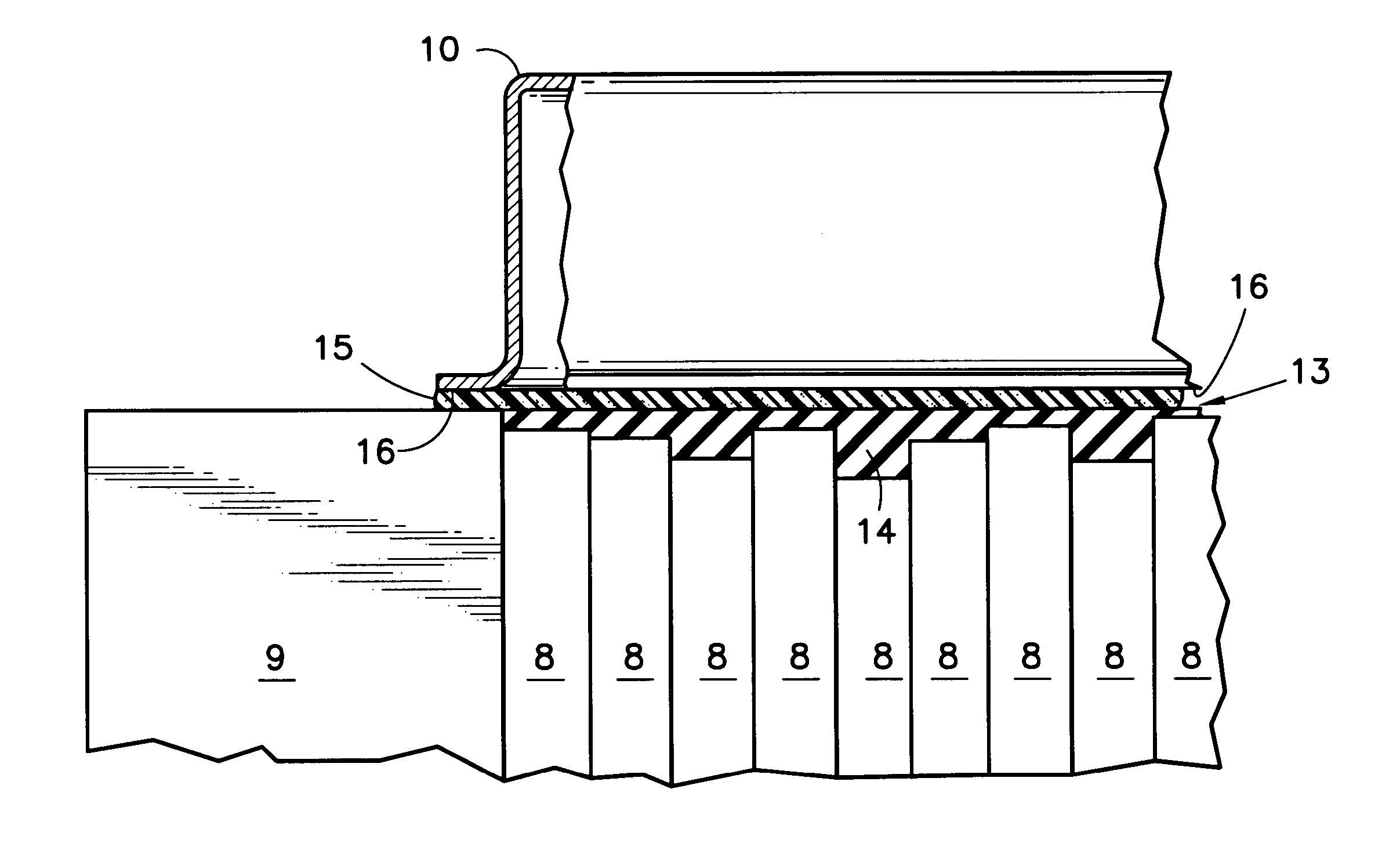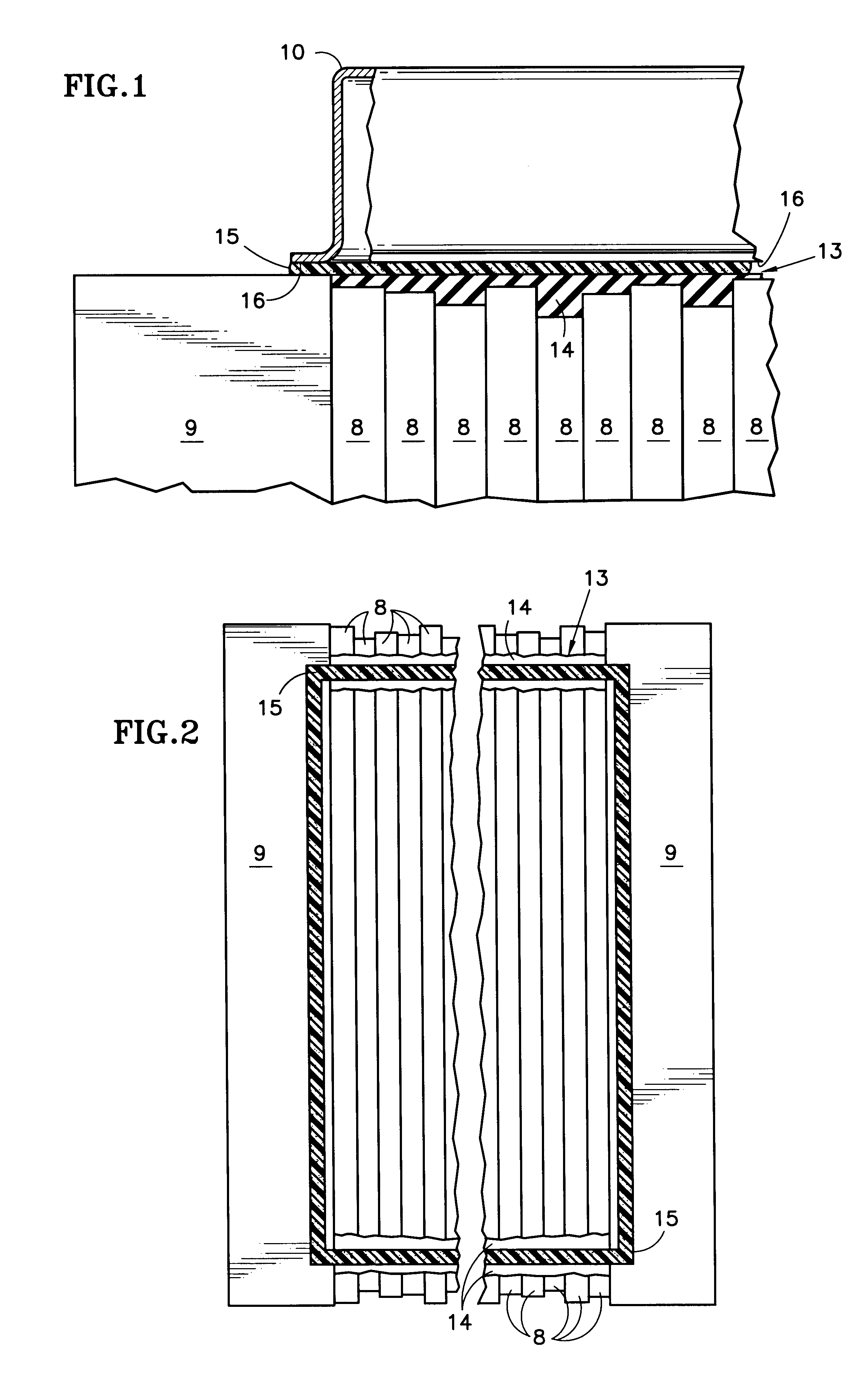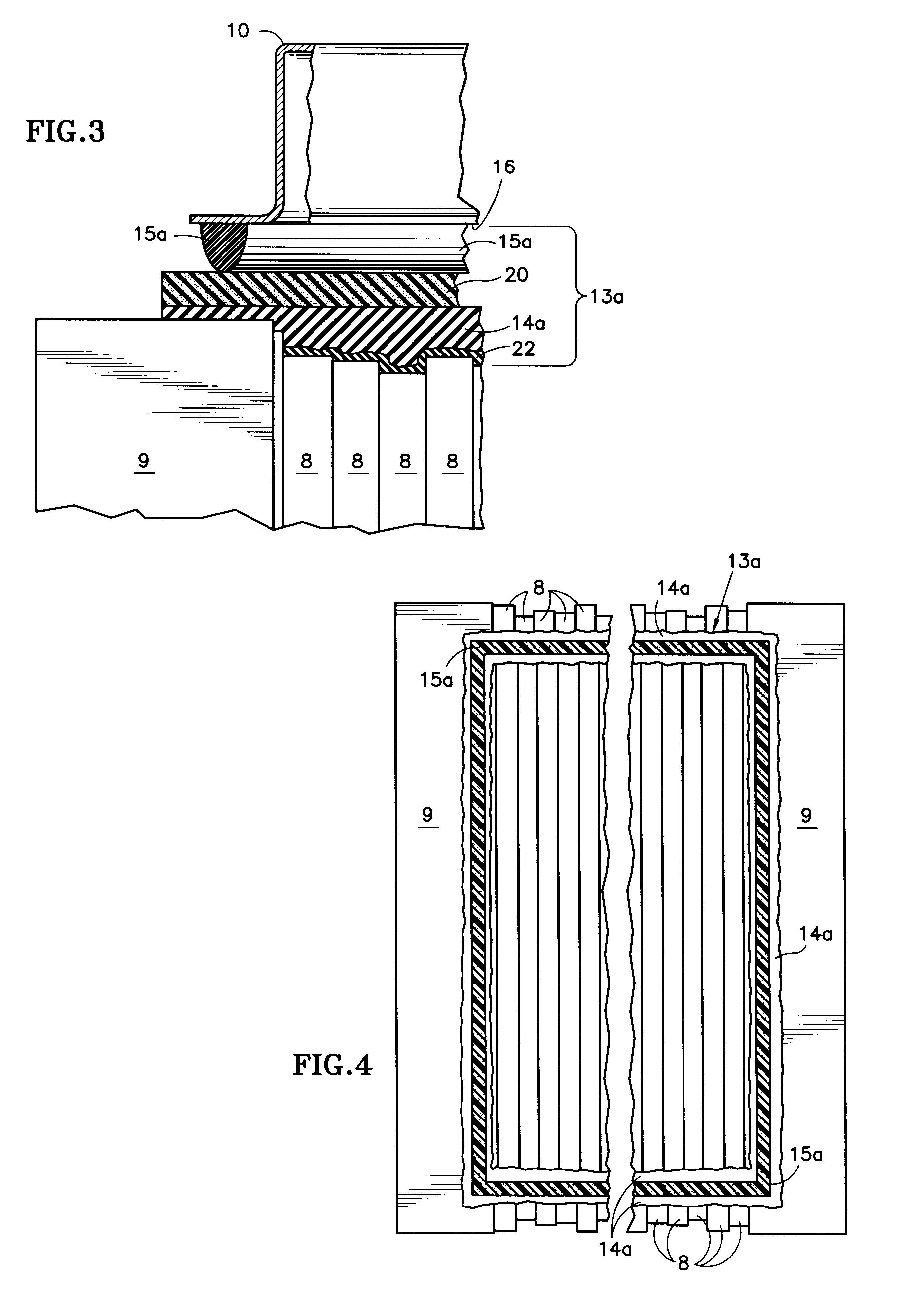Proton exchange membrane fuel cell external manifold seal
a fuel cell and proton exchange membrane technology, applied in the field of manifold seal system, can solve the problems of csa and manifold-to-csa seals undergoing compressive creep, increasing reactant leakage, and general damage of proton exchange membranes, and achieves compressible effect and low creep
- Summary
- Abstract
- Description
- Claims
- Application Information
AI Technical Summary
Benefits of technology
Problems solved by technology
Method used
Image
Examples
Embodiment Construction
Referring to FIGS. 1 and 2, the fuel cell component elements 8 of a PEM fuel cell are depicted stylistically, and, as is known include, for each cell, a membrane, an anode substrate, an anode catalyst, a cathode substrate, a cathode catalyst, an anode flow field plate and a cathode flow field plate; a cooler plate may be interspersed between each cell or each group of three to four cells. The positions of the edges of these elements are irregular as shown in FIG. 1, giving rise to one aspect of the problem with providing an adequate seal system for a PEM fuel cell. The elements 8 are sandwiched between end plates 9, which are bolted together so as hold the various layers in tight contact with one another. A reactant gas manifold 10 (shown in FIG. 1) is positioned above the elements 8 so as to provide flow of reactant gas (either oxygen containing oxidizing gas or hydrogen containing fuel gas) to and from the flow field plates so as to bring the reactant gases to the anode and cathod...
PUM
| Property | Measurement | Unit |
|---|---|---|
| compressive set | aaaaa | aaaaa |
| stack temperatures | aaaaa | aaaaa |
| pressure | aaaaa | aaaaa |
Abstract
Description
Claims
Application Information
 Login to View More
Login to View More - R&D
- Intellectual Property
- Life Sciences
- Materials
- Tech Scout
- Unparalleled Data Quality
- Higher Quality Content
- 60% Fewer Hallucinations
Browse by: Latest US Patents, China's latest patents, Technical Efficacy Thesaurus, Application Domain, Technology Topic, Popular Technical Reports.
© 2025 PatSnap. All rights reserved.Legal|Privacy policy|Modern Slavery Act Transparency Statement|Sitemap|About US| Contact US: help@patsnap.com



